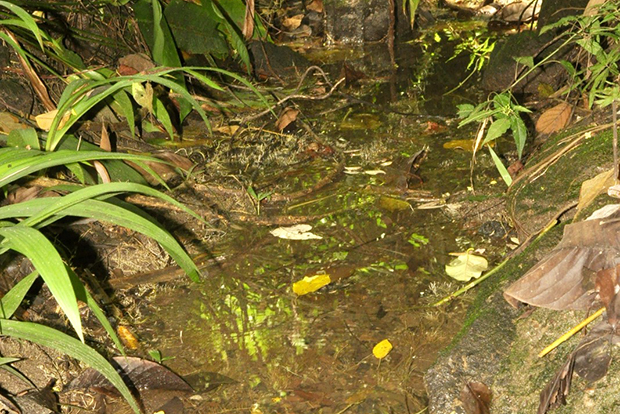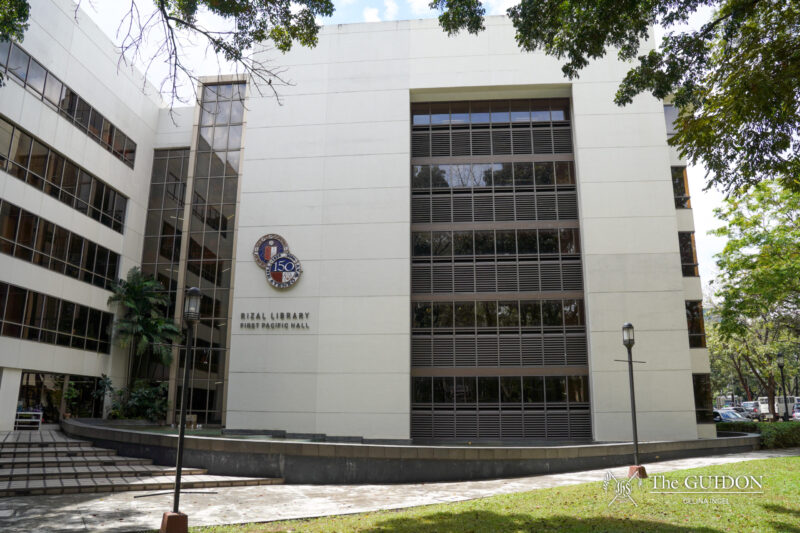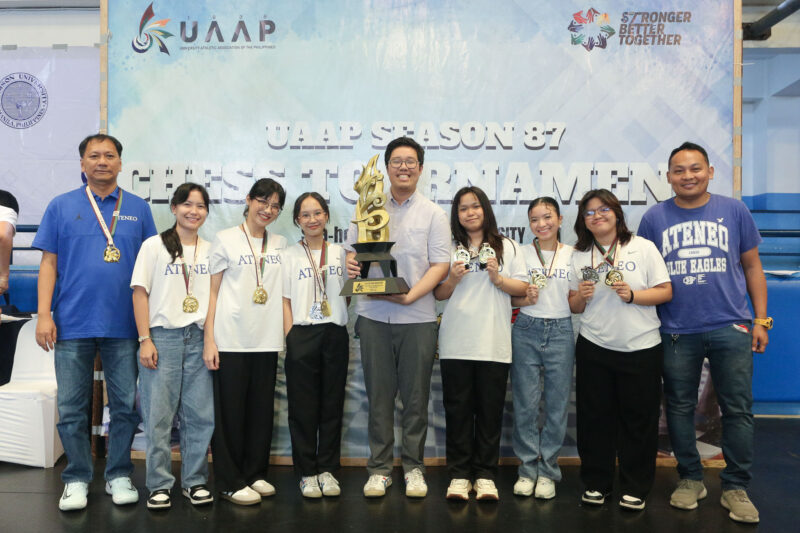TWO ALUMNAE of the Ateneo, under the guidance of Biology Department Associate Professor Hendrik Freitag, PhD, discovered a new water beetle species. The discovery was named Hydraena ateneo (H. ateneo), in honor of the school.
The species was discovered by Arielle Vidal (BS LfSc ‘13) and Kimberly Go (BS LfSc ‘13) last November 2012 during a scheduled training session for aquatic beetle collection in preparation for their thesis.
Freitag published an article about the discovery entitled “Hydraena (Hydraenopsis) ateneo, new species (Coleoptera, Hydraenidae) and other aquatic Polyphaga from a small habitat patch in a highly urbanized landscape of Metro Manila, Philippines” in the open-access journal Zookeys last September 9.
He explained that the article was only published this year because taxonomic studies, particularly one made to verify the discovery, usually take a long time to complete. Also, the discovery had to undergo a peer review process before it could be published.
The article described the H. ateneo as predominantly brown with “distinctly paler yellowish brown” antennae. It is also said to be 1.25 to 1.33 millimeters long and 0.58 to 0.62 millimeters wide.
H. ateneo is differentiated from the other known Hydraena species in Luzon by its size, color, distinctive legs, dentation of the throrax shield and its aedeagus, its male reproductive organ.
Unexpected discovery
Vidal and Go recounted how they discovered the water beetle species.
According to Vidal, Freitag wanted to show them where and how Hydraena could be obtained.
“He told us he found a nice place near the Jesuit Seminary and suggested we head there to check it out,” she added.
The two students were able to find some Hydraena submerged in leaf litter near the Jesuit Residences. However, the specimens were too small to be identified on the field and had to be studied under a stereomicroscope.
Upon observation of the Hydraena sample, Freitag explained to the two that the specimens were unidentifiable based on the existing literature on Philippine and Asian Hydraena.
Freitag said that he verified the observation gathered by the two students and inferred that Vidal and Go had discovered a new water beetle species.
Both Vidal and Go were surprised by their discovery.
“Basically, it was just a test run for the real deal. We never expected to discover a new species,” said Go.
Freitag, however, clarified that it was by chance that the beetle was first found within the Ateneo. According to him, the H. ateneo is not found solely on campus or within Metro Manila.
“They are [also] likely to occur in natural freshwater bodies around Manila and maybe even in entire Luzon,” he added.
Freitag further explained that the environmental conditions on campus played a role in the survival of the H. ateneo in the area.
He guessed that the species re-colonized in the campus with the development of tree cover in the Ateneo over the last 50 years. He also said that the H. ateneo’s survival may be due to the lengthy periods of time that small creeks and ponds on campus hold water.
Further plans
Originally, Go and Vidal planned to work with Freitag on a paper regarding the H. ateneo. However, this plan was put on hold because the two decided to go on to medical school after graduating from the Ateneo last school year.
According to Go, as much as they would have liked to take part in the writing of the paper, time constraints prevented them from doing so.
However, their discovery will still be featured in several presentations, workshops and conferences.
Freitag is currently working on another paper entitled “Diversity of Aquatic Coleoptera of the Philippines – Checklists, State of Knowledge, Priorities for Conservation & Future Research,” which will feature the beetle discovery.
He is also awaiting the inclusion of the discovery in a conference to be held in Malaysia later this year. The conference will focus on “a mega-diverse water beetle genus (Coleoptera: Hydraenidae: Hydraena) commonly overlooked in Southeast Asia and its potential use for environmental monitoring.”
According to Freitag, he prioritized the publication of the H. ateneo’s discovery because the Biology Department is celebrating its 50th anniversary this year.
Milestone
Vidal and Go both said that the discovery gave them an “indescribable feeling.”
“It made me happy knowing that it has sparked the interest of many. There’s more to the Philippines than what was originally thought. We just have to be more curious,” said Vidal.
They encourage students of the Ateneo to give greater importance to systematic biology and taxonomy, branches of biology that deal with the naming and classifying of organisms, as they may help the students make new discoveries in the future.
“Sure, it can get tiring and it may seem that you are doing the same things repeatedly, but have some patience and learn to enjoy it. It will be worth it in the end,” said Go.
“There are a lot of things in this world that have yet to be discovered. Who knows? You might discover something new,” she added.







